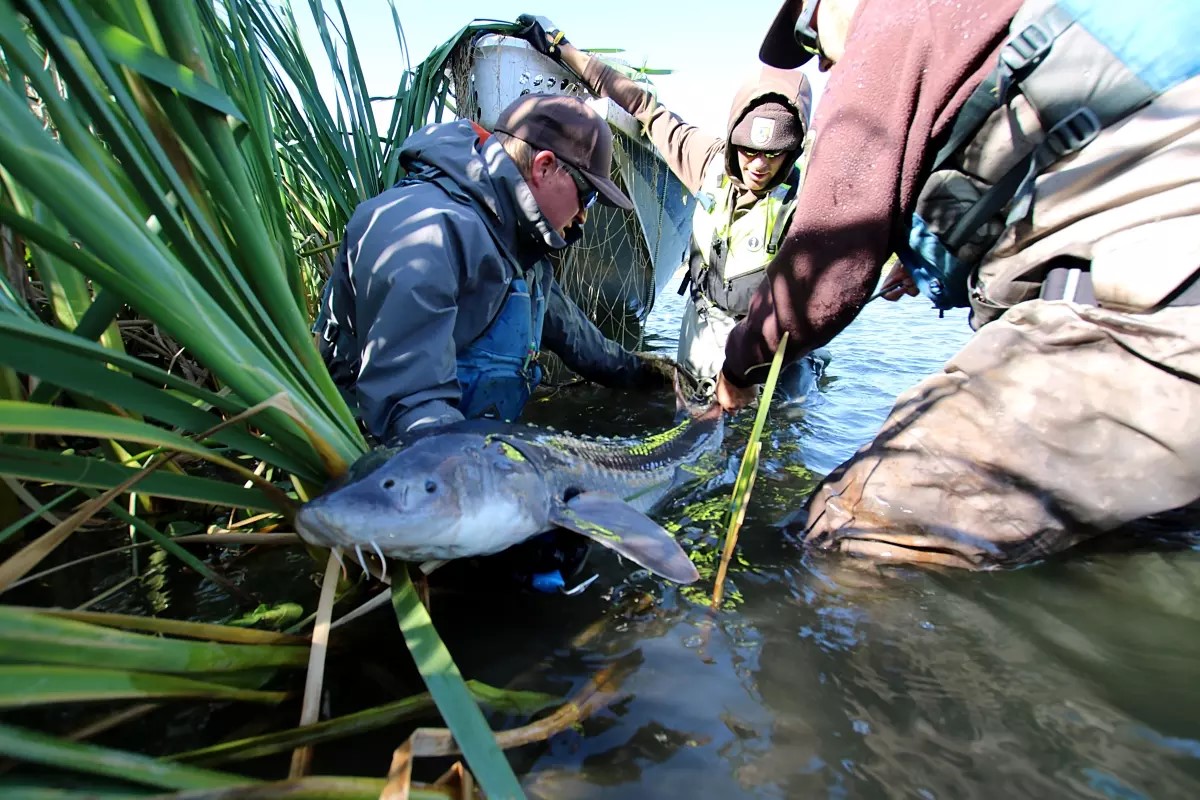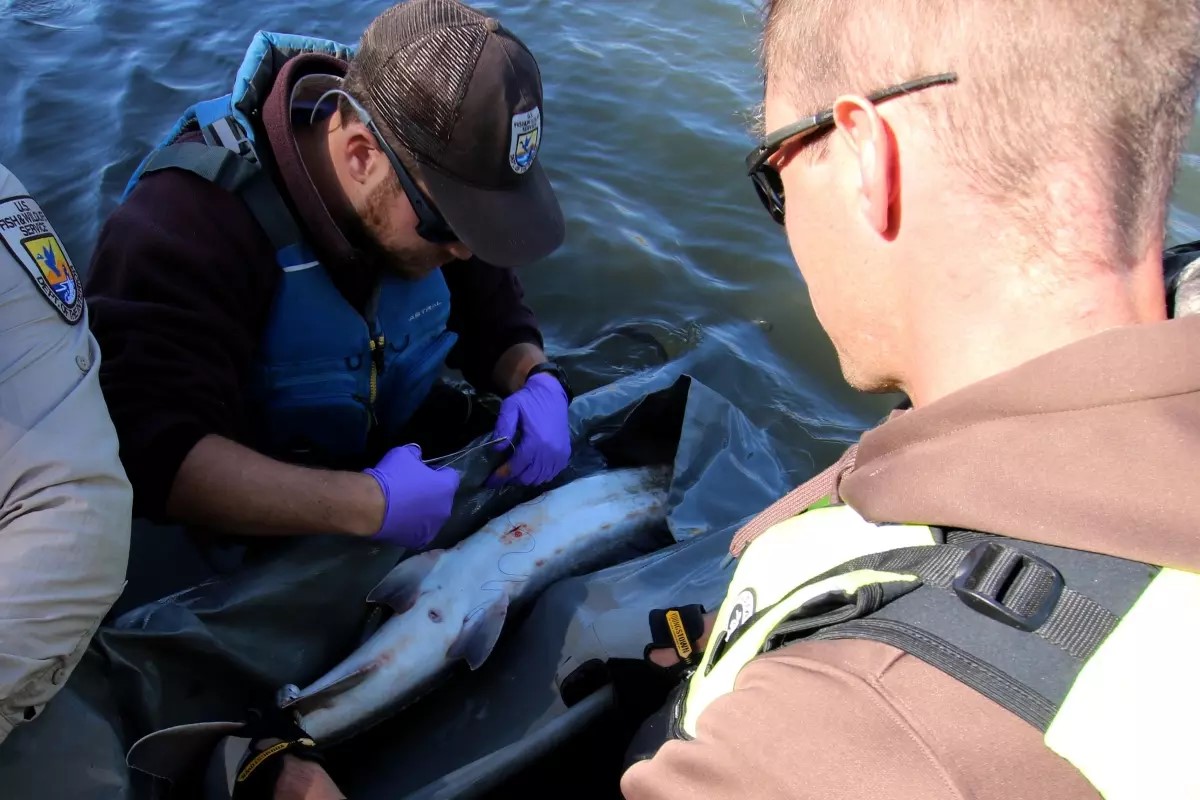Designing for Sturgeon Passage in San Joaquin Ease Bypass
Project Lead: US Fish and Wildlife Service
Location of Project: Latitude: 37.205082, Longitude: -120.697574
Description of Project:
Although SJRRP actively monitors Chinook Salmon, little is known about the migratory habits of San Francisco Estuary (SFE) White Sturgeon Acipenser transmontanus in the Restoration Area. Thus far, White Sturgeon have been detected at the entrance of the Restoration Area (Hills Ferry) through a 2016-18 FWS tagging study, identifying twelve individuals. The 2019 capture of two White Sturgeon and a Green Sturgeon also at the Hills Ferry site suggest the potential for active use of the Restoration Area by sturgeon.
An understanding of when, where, and how White Sturgeon use the Restoration Area downstream of the Eastside Bypass Control Structure (EBCS) is needed to ensure that planned modifications to the structure and construction of an engineered rock ramp facilitate upstream migration and habitat utilization by White Sturgeon and other native fishes.
For this proposal, our objectives are to inform any final design modifications for fish passage through the EBCS by answering the following questions:
- Do adult White Sturgeon currently utilize the San Joaquin River Restoration Area?
- What is the migratory behavior of this species between the San Joaquin’s confluence with the Merced River (i.e., near Hills Ferry) and the EBCS?
- To what extent are adult White Sturgeon found above EBCS following passage improvements?
- How do their movements relate to flows, temperature, or other parameters?
Acoustic receivers would be stationed below Sack Dam and Van Clief Road, and at the previously monitored site of Hills Ferry. Forum funding would provide for additional tagging of White Sturgeon and receiver maintenance and data acquisition needed to actively track these individuals. Outcomes and deliverables will therefore include telemetry data and summaries of the presence and spatial/temporal distribution of previously and subsequently tagged White Sturgeon within the downstream reaches of the SJRRP Restoration Area. Monitoring of White Sturgeon use of the area around the EBCS after completion of the passage project construction and under various Restoration Flows hydrographs can provide evidence for any continued barriers to White Sturgeon passage. The past several years, US Bureau of Reclamation (Reclamation) has released pulses of water during February into the Restoration Area that could help initiate migratory movement by White Sturgeon, but monitoring sturgeon to assess possible benefits has not been conducted. Tracking sturgeon movement during these pulse flows could inform the timing and duration of future Restoration Flow releases. The results of monitoring activities will be presented broadly to state and federal agency, water contractor, and nonprofit participants in the Eastside Bypass Improvements working group to promote coordination and communication across constituents and to contribute to passage modifications. Findings will also be presented during the next SJRRP Science Meeting, a biennial meeting that includes members of agencies, NGOs, academia, tribes, and the public, and water operators. Receiver files will also be uploaded to the Hydra database currently in use by the California Fish Tracking Consortium and made available to other users, as requested. The final report documenting the results will be made publicly available on the San Joaquin River Restoration Program website, and progress reports will be submitted to the Forum.



